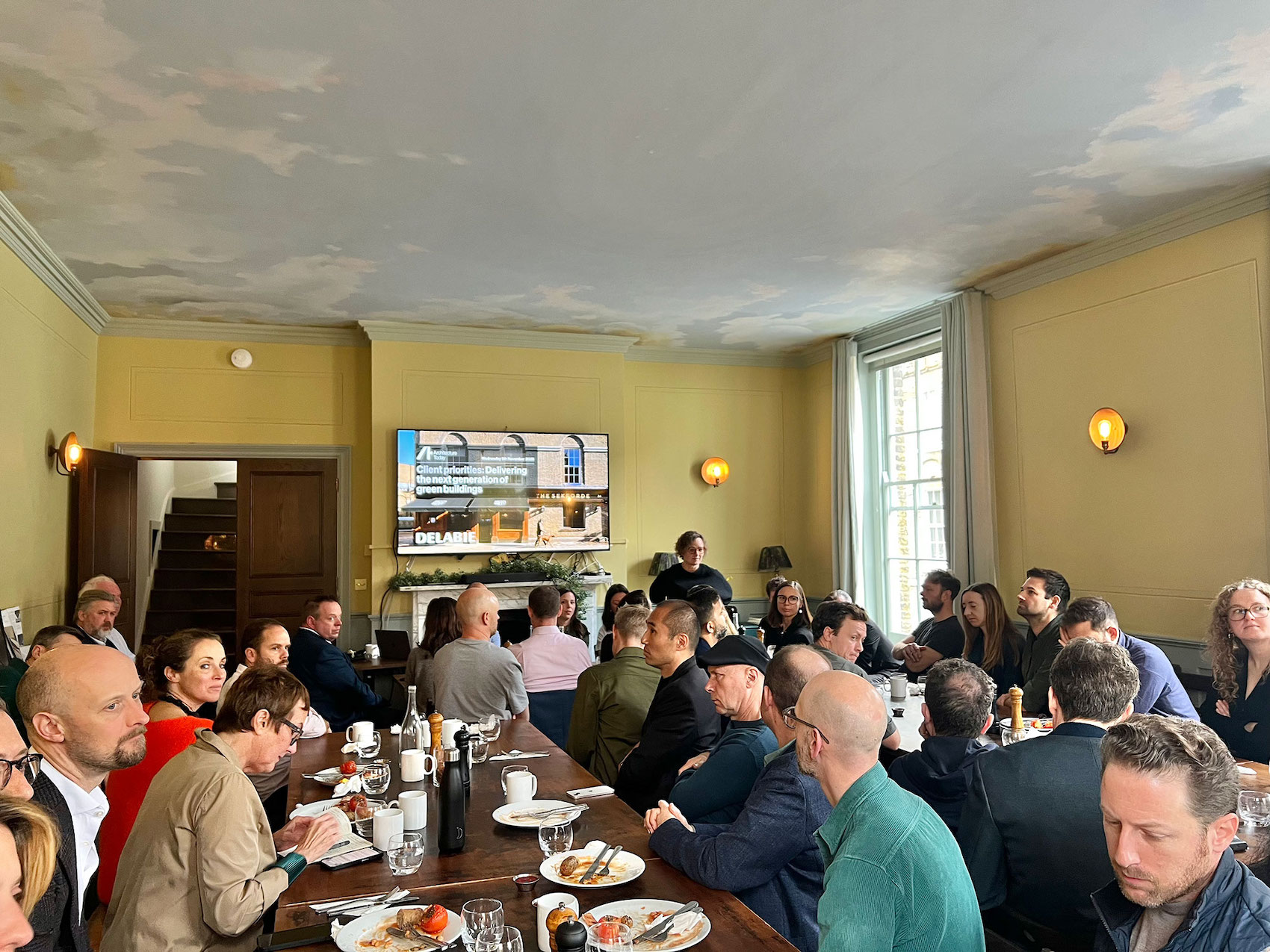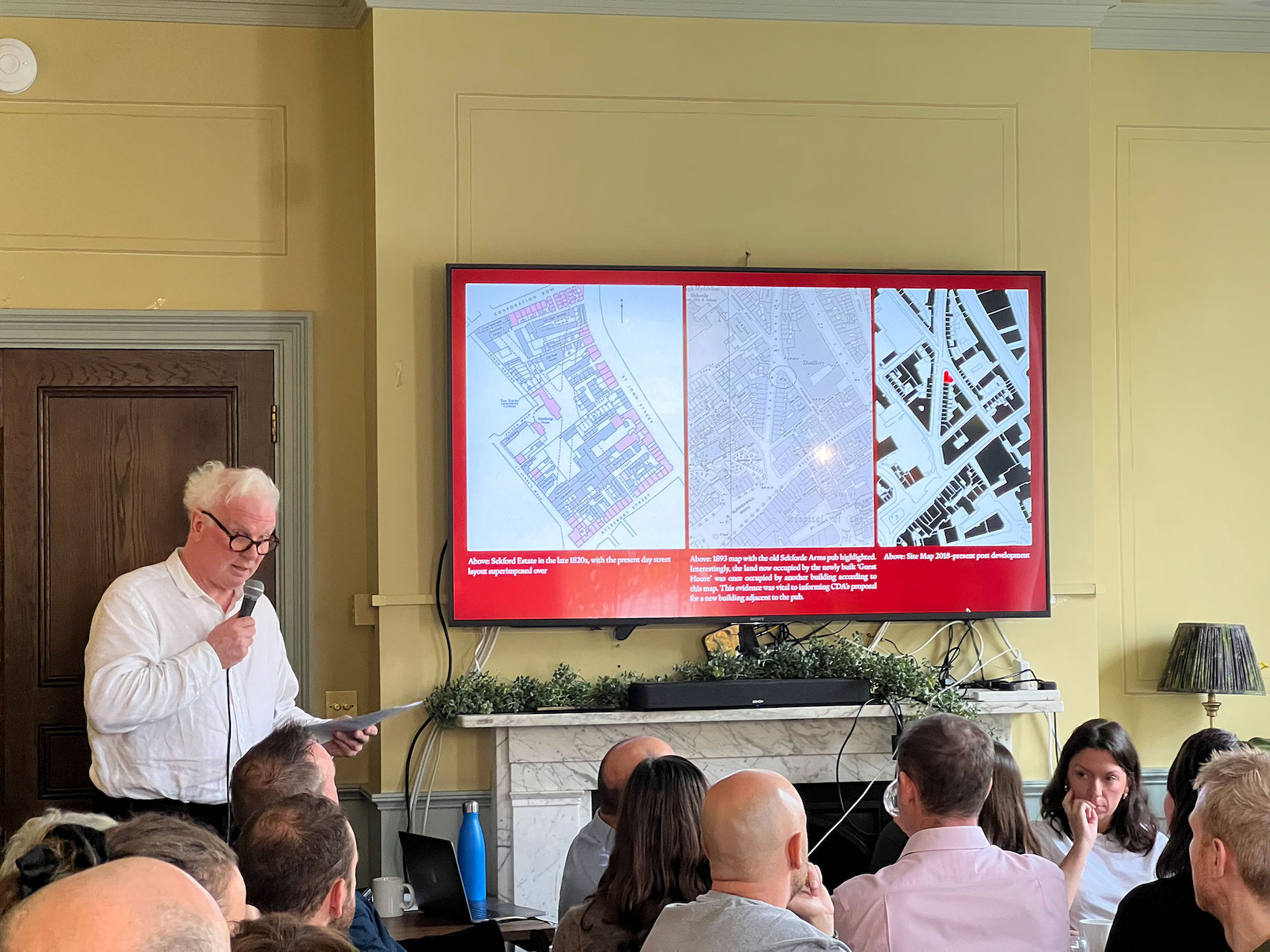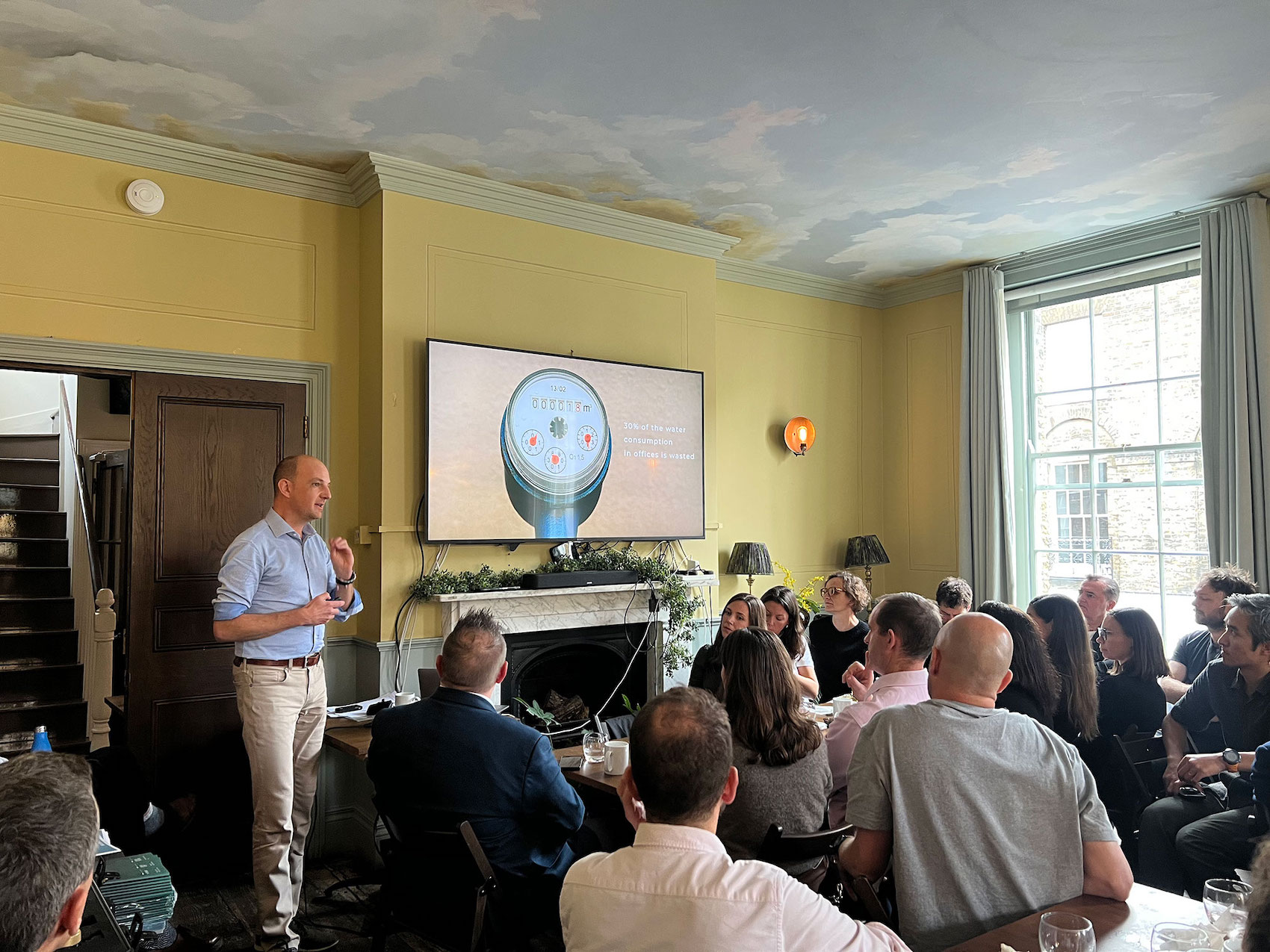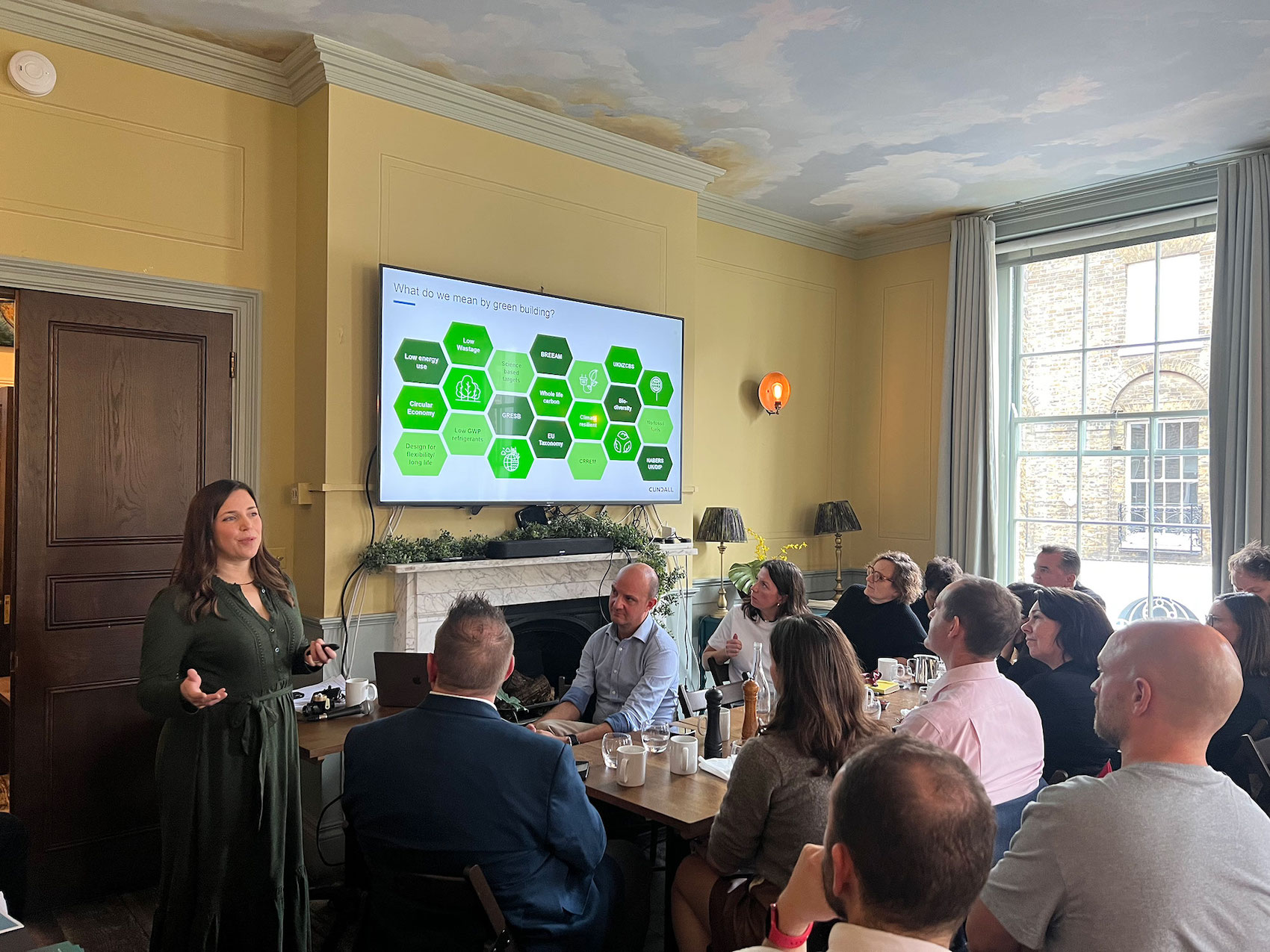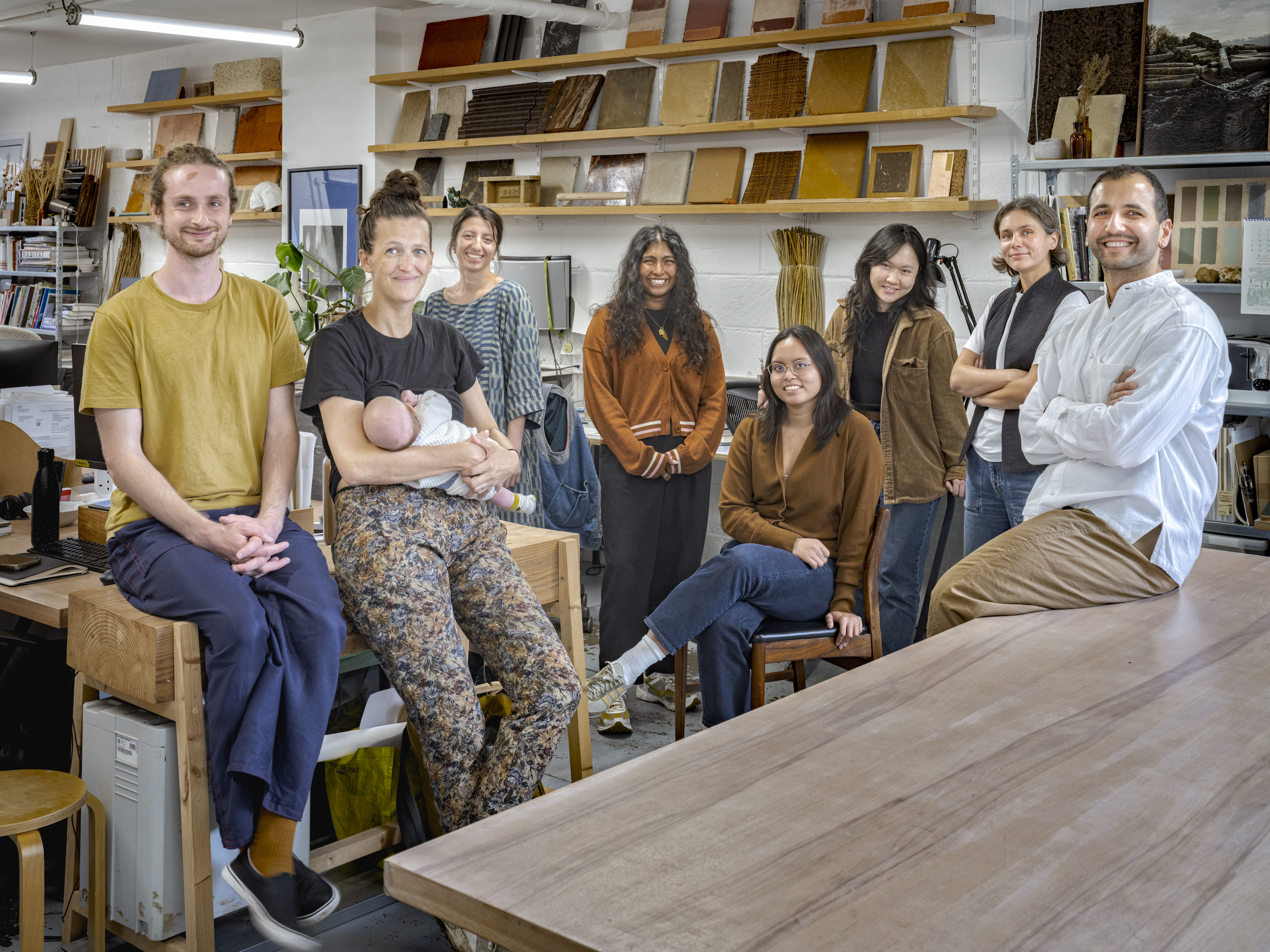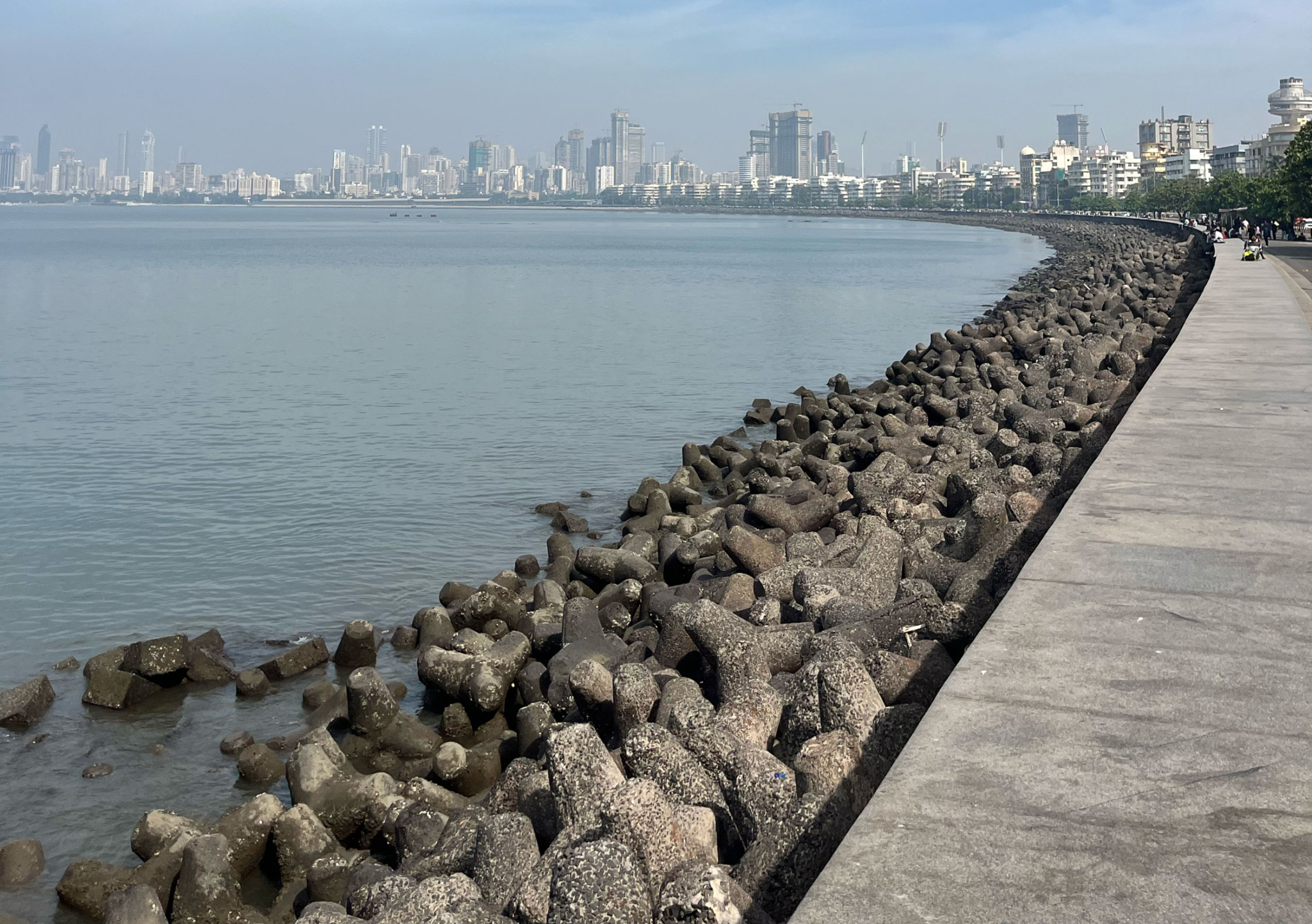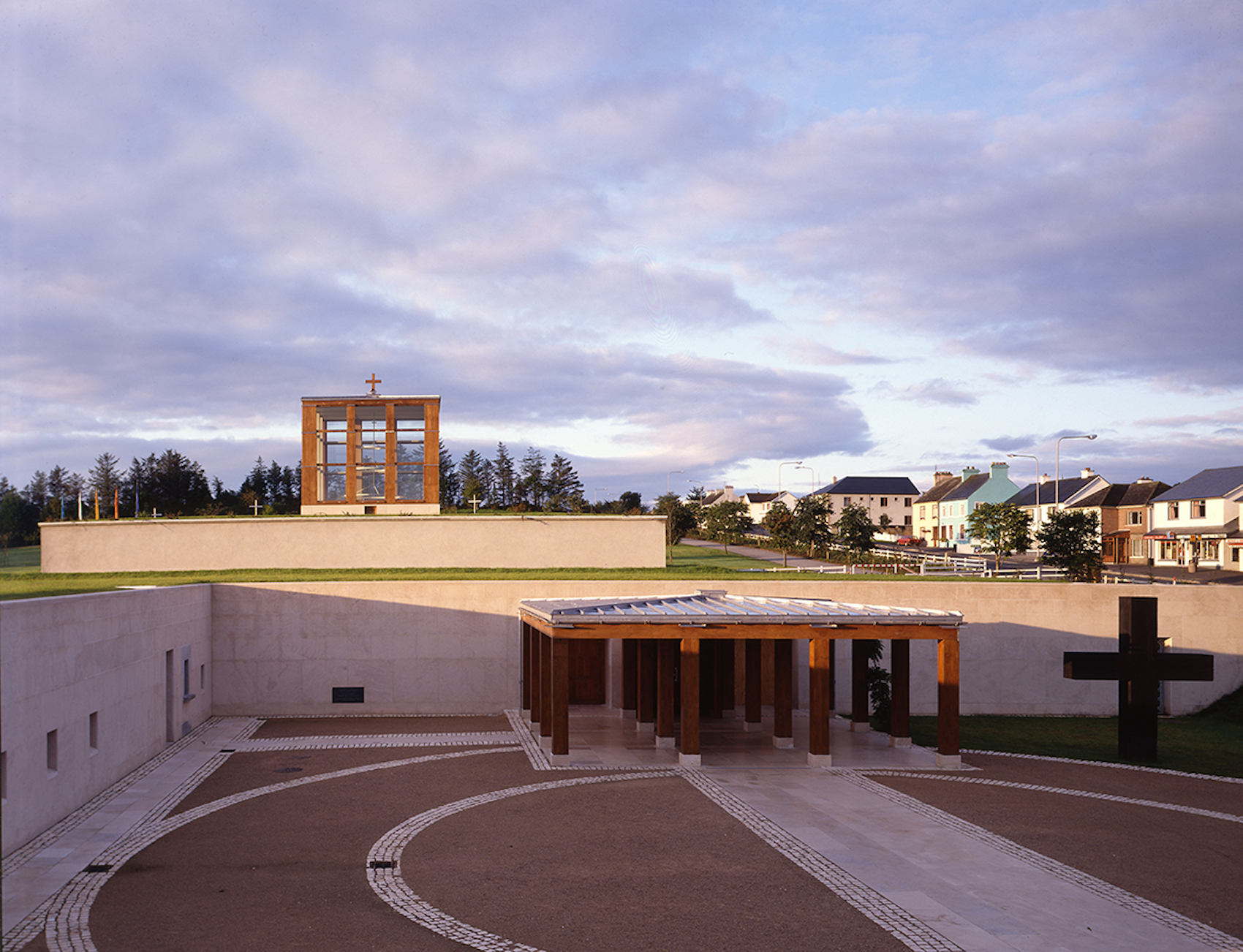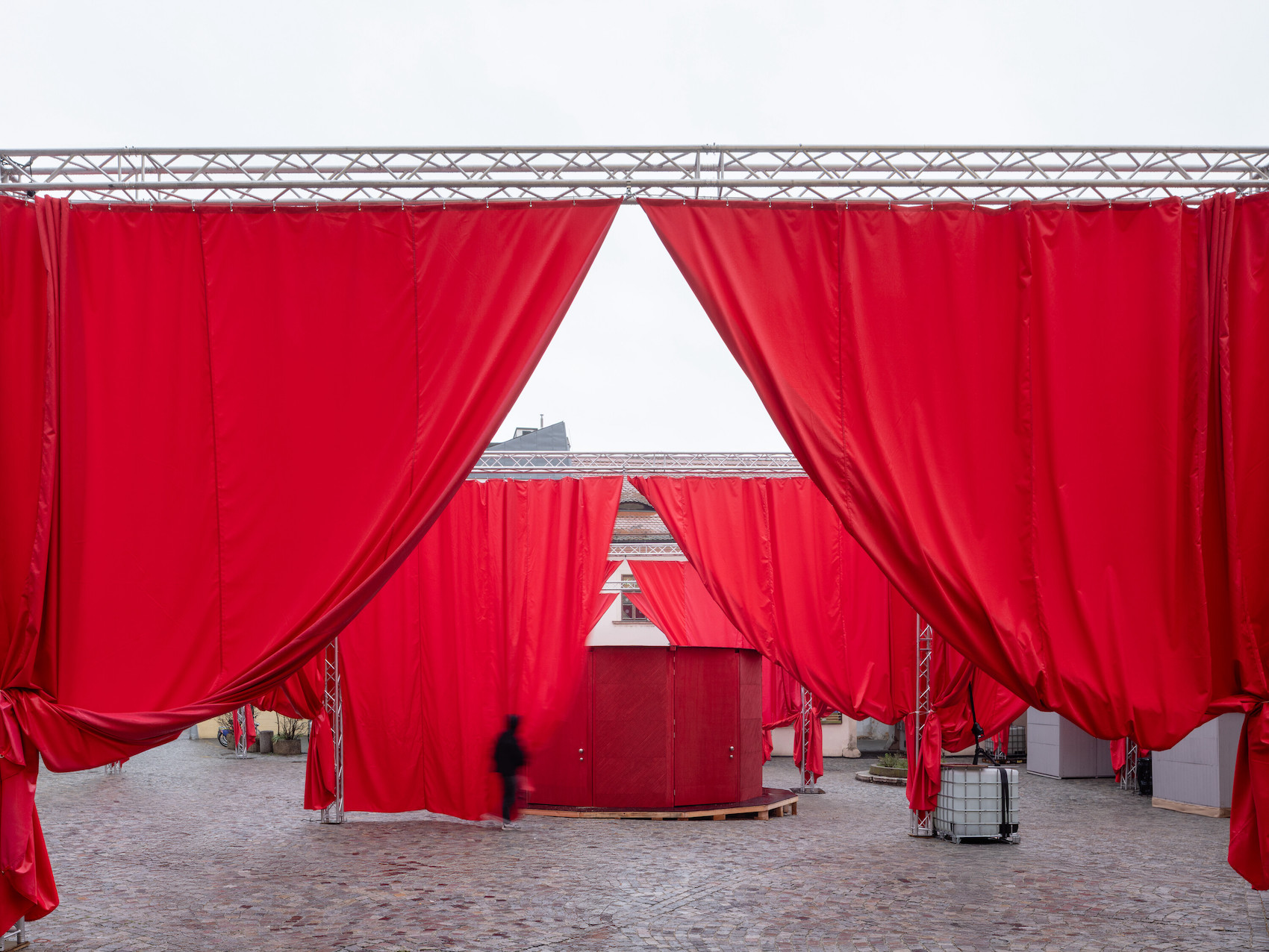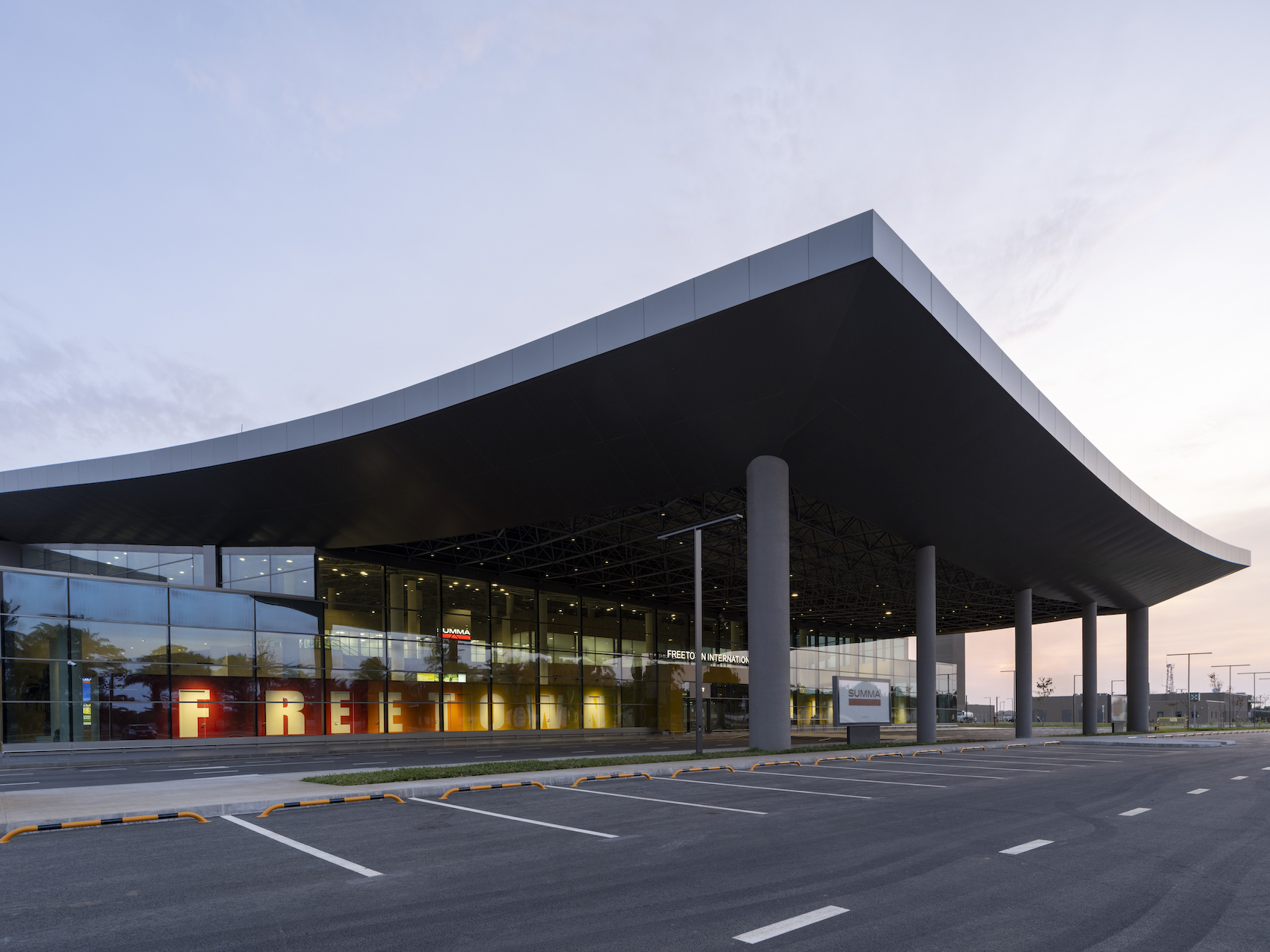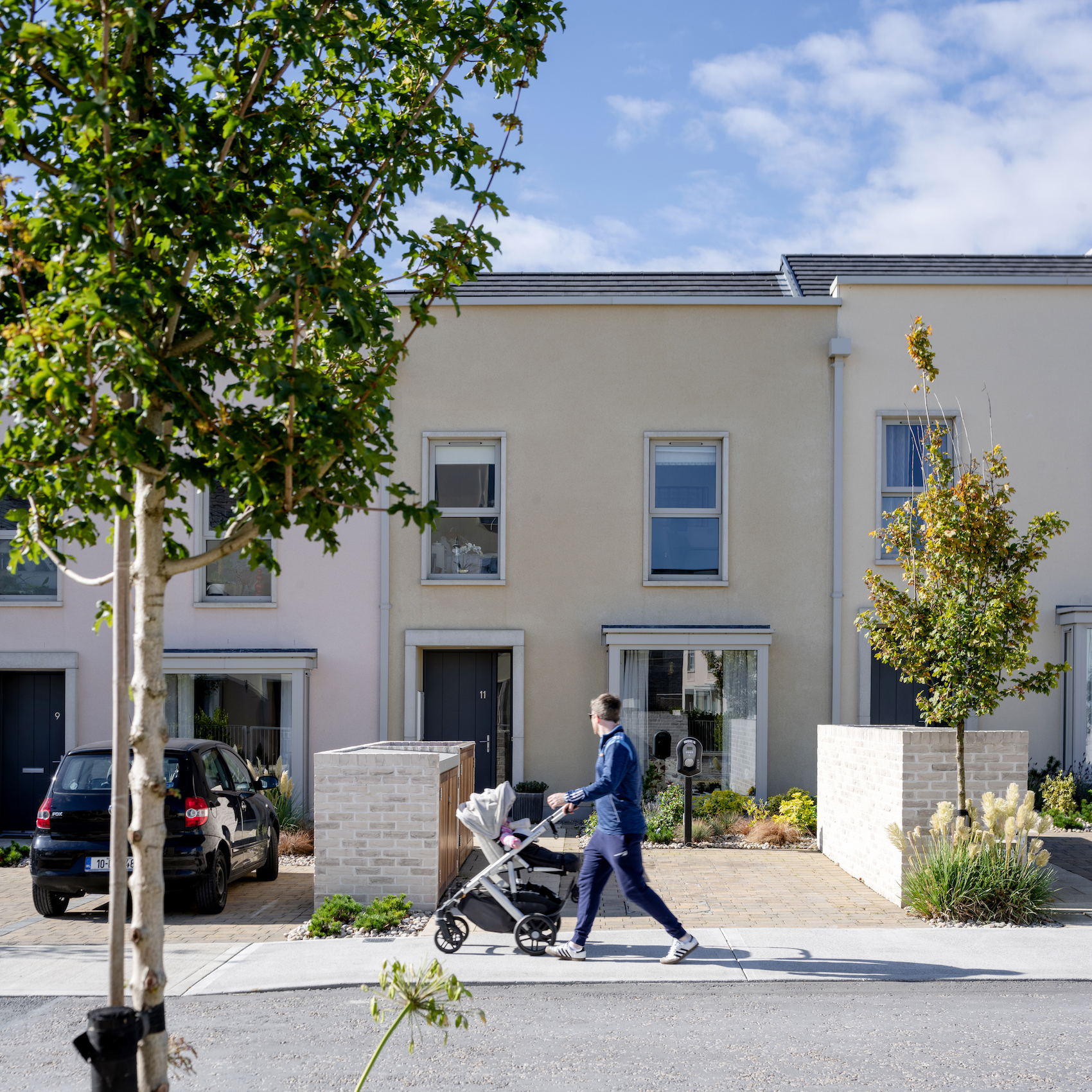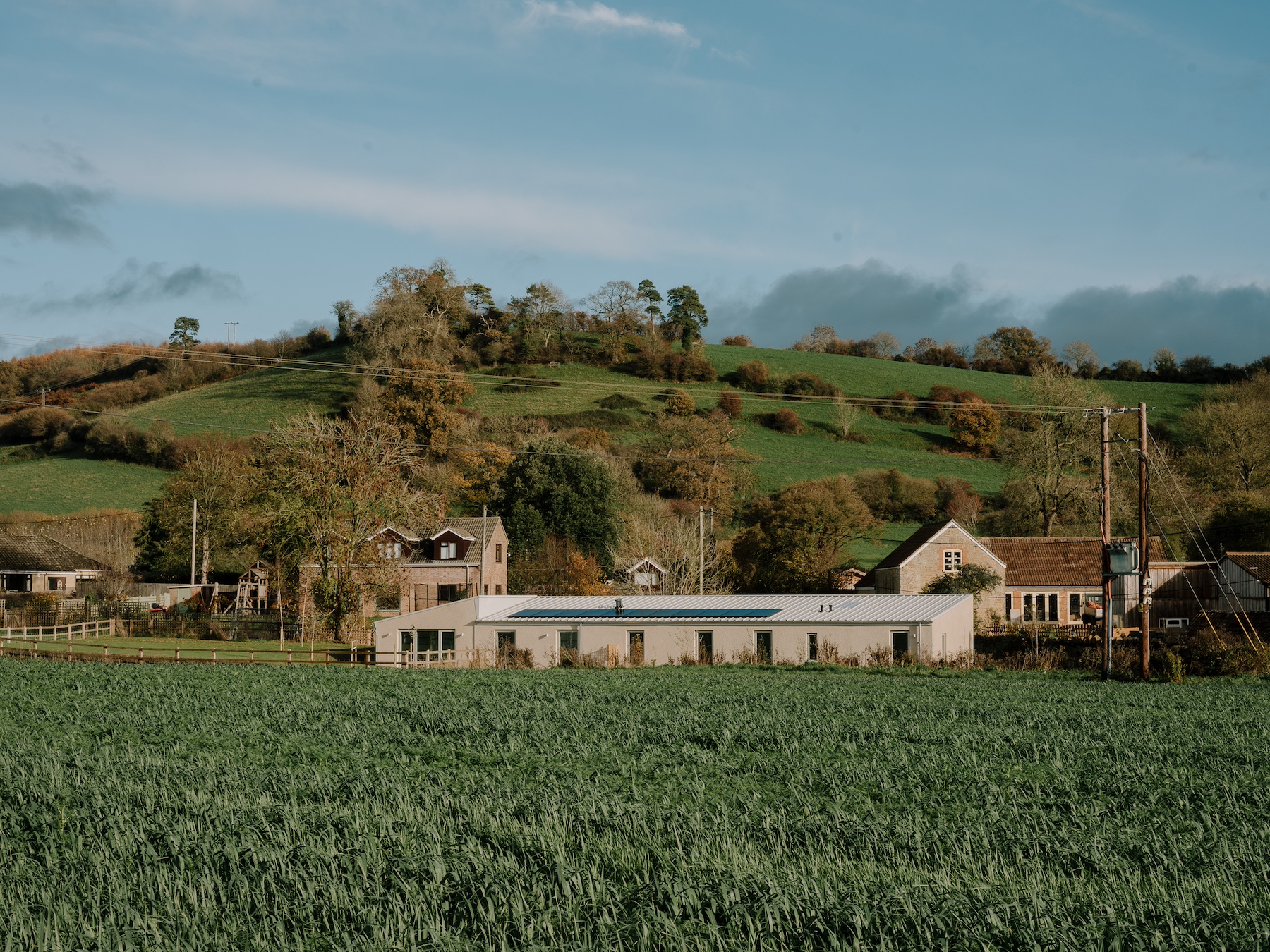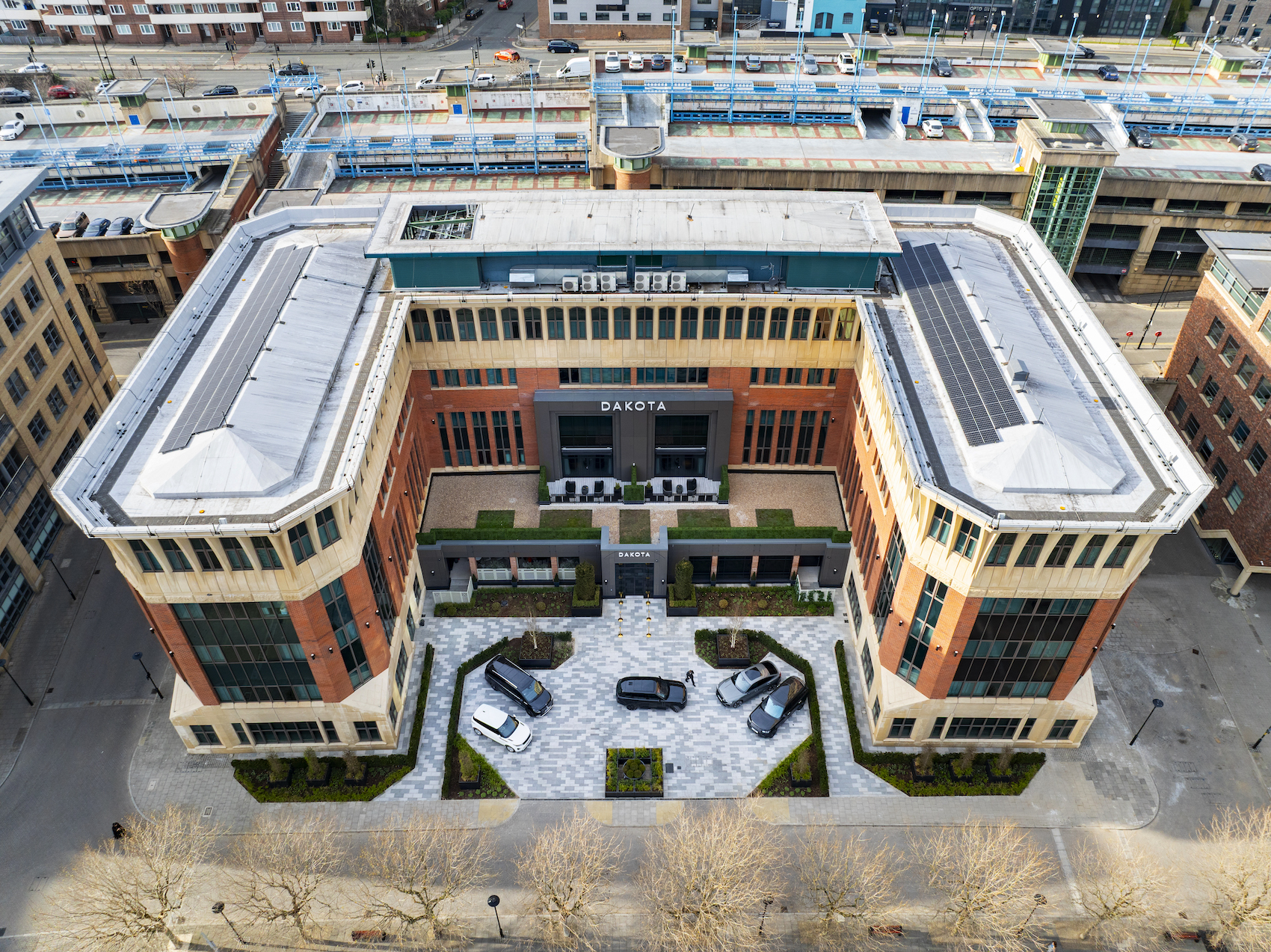Architecture Today’s latest Business Breakfast explored how client priorities are shaping commissioning, procurement and design for buildings that meet the complex challenges of long-term sustainability.
In association with![]()
The latest AT Business Breakfast, held in partnership with Delabie, took place on 5 November at The Sekforde in Clerkenwell, London. Architects, engineers and sustainability leaders came together to explore how client priorities are reshaping the commissioning and procurement of high-performance, future-ready projects. The morning featured thought-provoking presentations from Chris Dyson, Founder of Chris Dyson Architects; Aimée Felton, Director of Estates and Conservation at The Charterhouse; Sebastien Jeux, Sales Director at Delabie; and Frances Brown, Partner at Cundall. Following the talks, there was a question and answer session, which was held under the Chatham House Rule and chaired by AT Editor Isabel Allen.
Chris Dyson shared the story of The Sekforde, a low-energy, community-focused pub retrofit that prioritises whole-life sustainability.
Architecture that gives back
Chris Dyson kicked off with a case study on The Sekforde, a Grade II-listed building in London’s Clerkenwell, which his practice painstakingly restored with the ambition of making it “the most sustainable pub in London.” He described how the vision was to create a building that not only consumed less energy but actively gave back to its community, the environment, and its occupants.
Dyson explored the project’s varied environmental strategies, including air-source heat pumps, high levels of insulation, photovoltaic panels, MVHR, and rainwater harvesting. “Sustainability was never just about ticking boxes,” he recounted. “We were aiming for something that was holistically green – socially, environmentally, and architecturally.” The pub now operates with an energy bill that is nearly 75 per cent lower than comparable buildings of its type – an achievement made all the more notable by the fact that the building has retained much of its original character.
He also reflected on the importance of designing for long-term performance, highlighting details like easy-to-access plant rooms, durable finishes, and a mechanical system designed for intuitive maintenance. “The real test of sustainability is whether the building is still thriving in 30 or 40 years,” he concluded. “It has to be built for endurance, not just for certification.”
Aimée Felton explored how The Charterhouse in London is integrating sustainable upgrades into a complex, 14th-century heritage estate.
Balancing preservation with progress
Next, Aimée Felton, Director of Estates and Conservation at The Charterhouse, offered a thoughtful reflection on how heritage clients are embracing sustainability – not in spite of their historic estates, but because of them. She spoke about the unique pressures and opportunities of overseeing a site that dates back to 1348 and includes Grade I and Grade II-listed buildings, a museum, a private almshouse, and public gardens. “At The Charterhouse, we’re always walking the line between preservation and progress,” she said.
She noted that older buildings often outperform newer ones in terms of embodied carbon and materials longevity, but are frequently let down by operational inefficiencies. “Our job is to close that gap; to improve systems and performance without compromising the character of the building,” she explained. This means careful retrofitting, intelligent system integration, and working with specialist manufacturers who understand conservation constraints.
Felton also highlighted the importance of collaboration, commissioning and soft landings. “We can’t just install the right systems; we have to make sure they’re understood, used and maintained over time.” She encouraged the audience to see stewardship not just as a maintenance issue, but as a design principle.
Sébastien Jeux highlighted how Delabie’s cistern-free flushing systems tackle the widespread problem of leaking toilets in public buildings.
Water-saving innovation
Sébastien Jeux, Sales Director at Delabie, began his presentation by highlighting one of the most overlooked but pervasive problems in buildings today: leaking toilets. “Across the UK, millions of litres of water are lost every day due to silent leaks – often undetected for months, even years,” he said. In commercial and public buildings, where usage is high and maintenance intervals are long, the scale of the problem can be dramatic. “Just one leaking toilet can waste up to 400 litres a day. That’s the equivalent of five full bathtubs, every single day.”
To address this, Delabie has developed a suite of leak-proof, cistern-free toilet flushing systems designed specifically for high-traffic environments. Unlike traditional systems, Delabie’s direct-flush solutions eliminate the need for a storage cistern altogether, removing a key point of failure. “By removing the cistern, we’ve eliminated the most common cause of leaks,” he said. The benefits extend beyond water savings. Direct-flush systems also reduce the risk of bacterial stagnation, improve hygiene, and require significantly less maintenance over time. “We’ve engineered our valves to last over 500,000 cycles, and we commit to making spare parts available for 50 years,” Jeux noted. “It’s about lifecycle thinking from day one.”
He supported his points with real-world examples, including a large school that reduced water consumption by 90 per cent after switching to Delabie taps and WC flushes. “These are simple interventions with outsized impact,” he concluded. “Fixing leaks shouldn’t be reactive – it should be designed out from the start.”
Frances Brown called for joined-up thinking across design, procurement and operations to deliver future-ready green buildings.
Future-proofing through systems thinking
Concluding the morning, Frances Brown, Partner at Cundall, outlined what it really takes to deliver the next generation of green buildings, and the systemic shifts still required across the industry. She began by identifying a persistent disconnect: while the ambition for net-zero buildings is now widespread, the delivery mechanisms are often misaligned. “Design teams may specify high-performance systems, but they’re frequently value-engineered out or installed poorly,” she said. “We have to address not just what we design, but how we procure, commission and manage.”
She advocated for greater collaboration between design, engineering, facilities management and procurement teams from the outset of a project, and for placing greater weight on operational performance and post-occupancy evaluation. “Designing for low carbon is only the first step,” Brown said. “We need feedback loops that tell us whether buildings are actually performing as intended.” She shared Cundall’s experience working with clients to embed performance monitoring strategies from the start, using real-time data to inform building use, system efficiency, and energy consumption patterns.
Brown also addressed the cultural challenges that can obstruct progress. “There’s still a hesitancy to invest in good commissioning and facilities training,” she noted. “But if we want to see real change, we have to think beyond handover — and focus on how buildings are operated over their lifetime.” This, she argued, is particularly important in the public sector, where facilities teams are often under-resourced. Finally, Brown made the case for low-tech, passive design solutions, including natural ventilation, thermal mass, and flexible spaces, that can support long-term adaptability and minimise maintenance costs. “Not every solution has to be complex,” she added. “Sometimes simplicity is the most resilient choice.
Shared reflections
In the Q&A that followed, attendees discussed the challenge of balancing short-term capital costs with long-term operational benefits, particularly in the public and charity sectors. Felton pointed out that lifecycle value is difficult to quantify but crucial to understand, while Dyson stressed the importance of narrative: “If you want people to invest in sustainability, you have to tell the story clearly and consistently.”
The event closed with a shared recognition that delivering green buildings isn’t just a technical task – it’s a cultural and procedural shift. From specifying the right taps to designing for legacy, it requires joined-up thinking, long-term stewardship, and, above all, commitment. As Brown put it, “This isn’t about designing for the now, it’s about designing for the next generation.”


